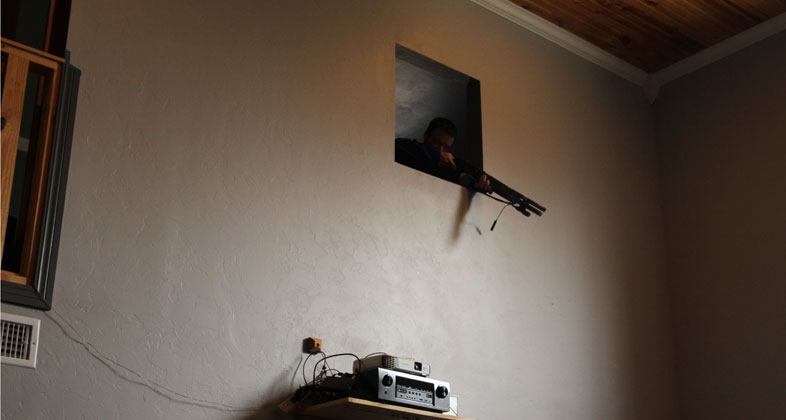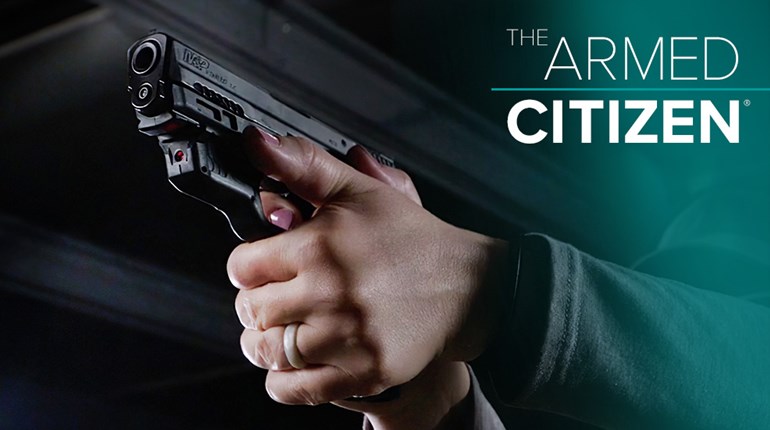
If you’ve read up on tactics for home defense, no doubt you’ve seen the word “cover” used copiously. That’s because confronting an attacker is not only about offensive tactics--stopping the threat--but about defensive tactics. To put it bluntly, it’s not just about shooting a criminal, but also not getting shot; therefore strategically using cover is vital for your family's defense plan.
In terms of “cover,” there are two major types: concealing cover and protective cover. In your home, workplace or place of frequent dwelling, you should know the difference between these types of cover and incorporate them into your strategic plan accordingly.
Concealing cover is anything that prevents you from being detected by your antagonist, or at least decreases the ease at which an attacker can see you. Fact is, if an attacker can’t see you, it’s much more difficult for him to attack you. In essence, concealing cover means making yourself invisible or reducing the size of your target--or what is exposed to danger. Concealing cover ideally allows you to move from one location to another undetected. (A long wall is the best example.)
Concealing cover is best utilized if no part of your body is visible from it, because if an attacker knows you are behind the couch for example--maybe he can see your shoe sticking out--he can take steps to get an advantage, such as moving around the couch to flank you or simply shooting through the couch, because a couch is not a protective cover.
That brings us to protective cover. Protective cover is anything that can protect you from being struck by a bullet--or whatever weapon the threat has in possession. But because protective cover is not all made the same, and because guns vary widely in their ability to penetrate objects, defining what is protective cover is tricky. To simplify, you should be aware of some generalities.
First, all concealing cover is not protective cover, and all protective cover is not necessarily concealing cover. (Think of bulletproof glass, where the attacker can see you, but cannot shoot through the glass.)
Sheet rock-and-wooden stud walls are concealing cover, but are not a reliable form of protective cover. Sure, a bullet could strike a stud and either stop or be deflected, but there is more insulation than wood in a stud-built wall, and so the chances are higher that a bullet will penetrate the sheet rock, travel in between studs, and sail through the other side of the sheetrock wall before striking you. So you really shouldn't think of a typical interior home wall as protective cover. However, brick, cement and rock walls will stop most bullets, so these types of walls are protective cover. Use them to your advantage whenever possible.
Doors are also tricky. Even relatively tame 9mm handgun bullets will easily go through a double sided, thin-gauge metal door; I know because I’ve tested it. Solid hardwood doors are better, but it all depends on the density and thickness of the door as well as the firearm used. If the attacker is firing a centerfire rifle, all but the heaviest of steel doors probably will not do for protective cover. Beds, bookshelves, furniture and flatscreen tvs? Don’t bet your life on them. Gun safes? Now we’re talking. A good quality steel gun safe provides excellent cover from the bullets of most firearms. Even so, do not camp behind it for too long unless it is defendable and its position is incapable of being flanked--such as if it’s in a windowless basement or a safe room.
Your job in your house is to identify places, walls, furniture or features that can be used as protective cover and concealing cover if your home ever comes under attack. Discuss this with your family, and tell them that if they hear guns, they should use the identified concealing cover to move undetected to protective cover. Hopefully, you’ve established a safe room or another dedicated space inside the home that contains unflankable protective cover. However, a good hiding place--concealing cover--is a great option on its own.
None of these scenarios are fun to think about--and there are no absolute solutions to a random event that could unfold in myriad directions. But thinking about cover now, and how you and your family can use what’s available in an emergency, is better than waiting until your life depends on it.







































